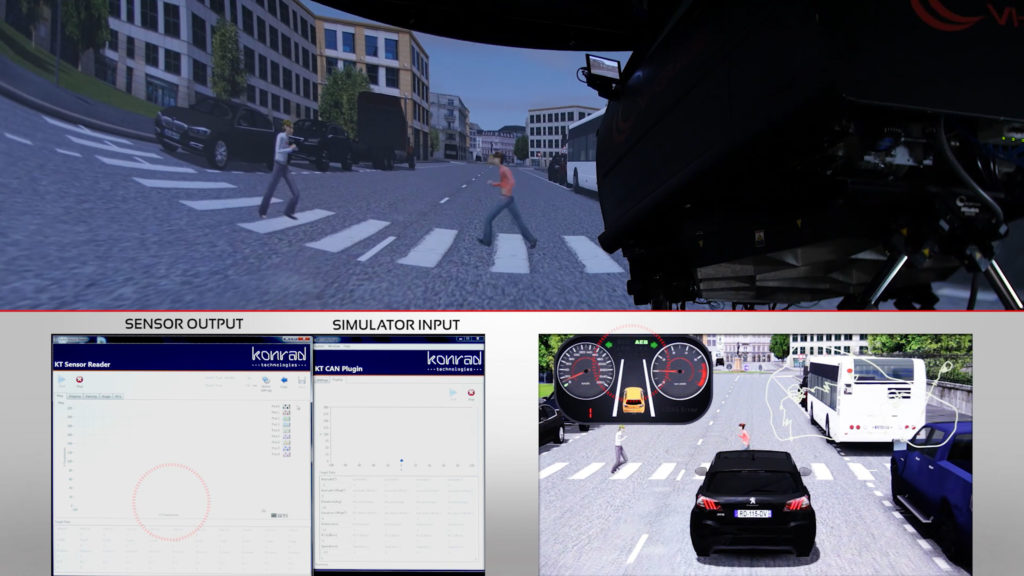Konrad Technologies is expanding the sensor fusion HIL testing it debuted four years ago, adding DIL functionality thanks to a partnership with VI-grade. This way, radar, camera and lidar systems can be tested at subsystem- and system-level implementations to verify ADAS capability for functions such as automated braking, adaptive cruise control, and lane departure warning.
The VI-grade Driver in Motion 150 simulator captures driver behavior with 9 degrees of vehicle movement to simulate a real-world driving situation for traffic simulations.
For DIL with sensor fusion testing, the objects around the vehicle from the drive simulation software are simulated by Konrad Technologies sensor simulators in real time. The output of the sensors is then brought back into the software simulation to close the execution loop.
Helmut Schmitz, key account manager for VI-grade explained how the system moves the game on: “It’s unique, it’s the first time someone is doing this. We already had a lot of good feedback since the colleague from Konrad [Ram Mirwani, at the Autonomous Vehicle Test & Development Symposium] gave his presentation about the system. You can do a lot more testing in the lab, you can reproduce it. Usually, a lot of this testing is done in the real world, late in the development cycle, whereas now it can be done earlier, in the design cycle, so it’s easier to change things.”


